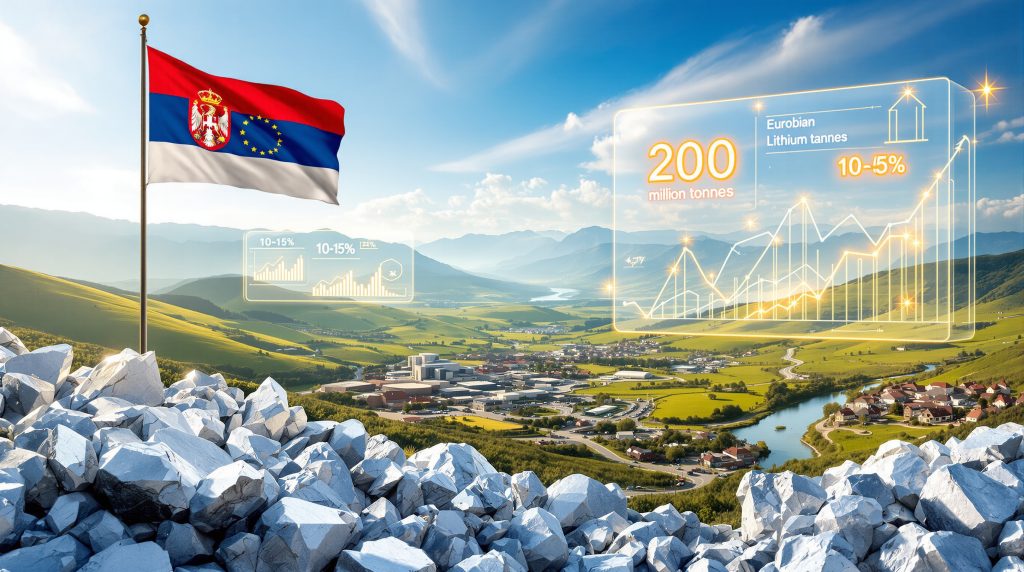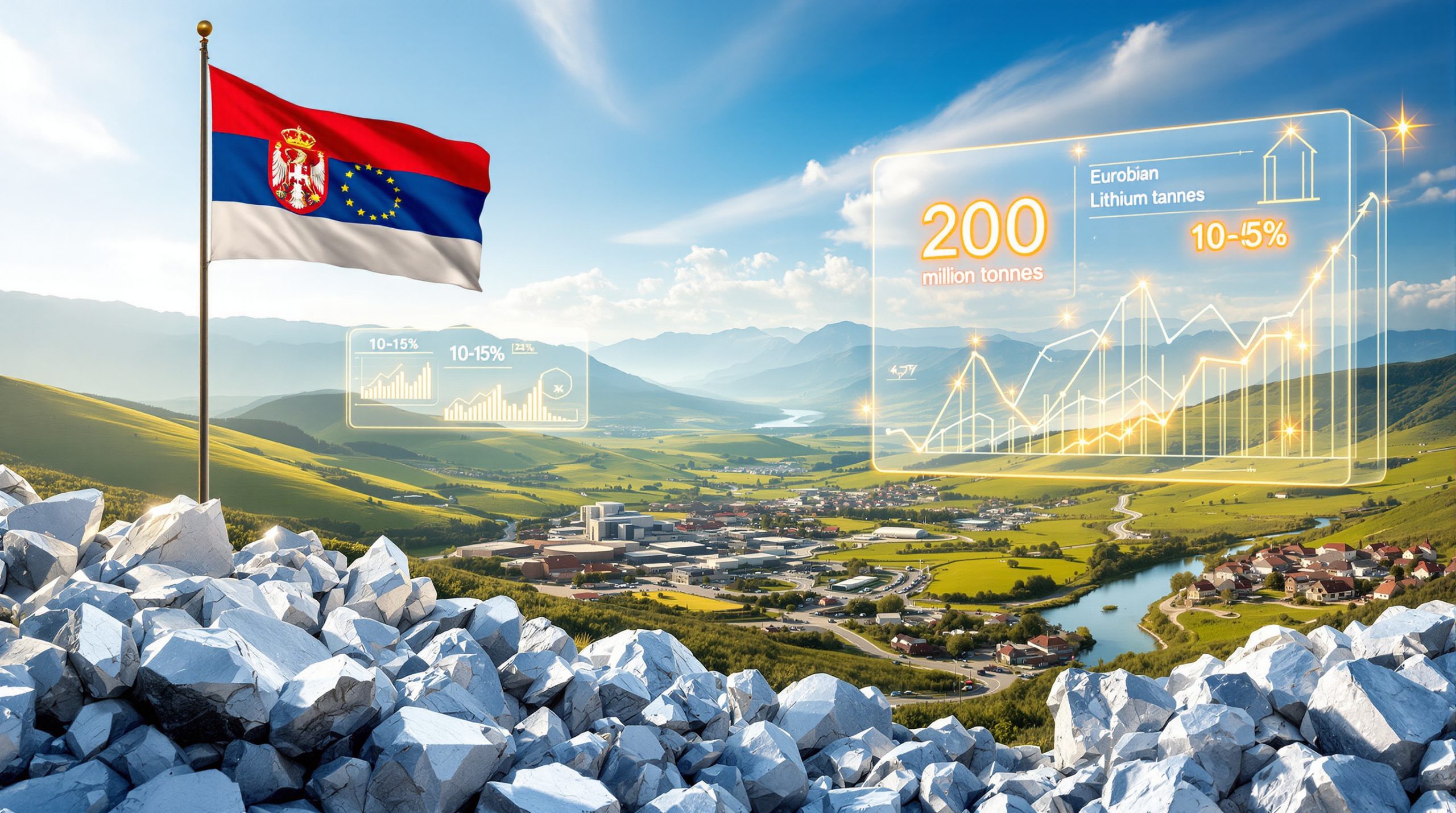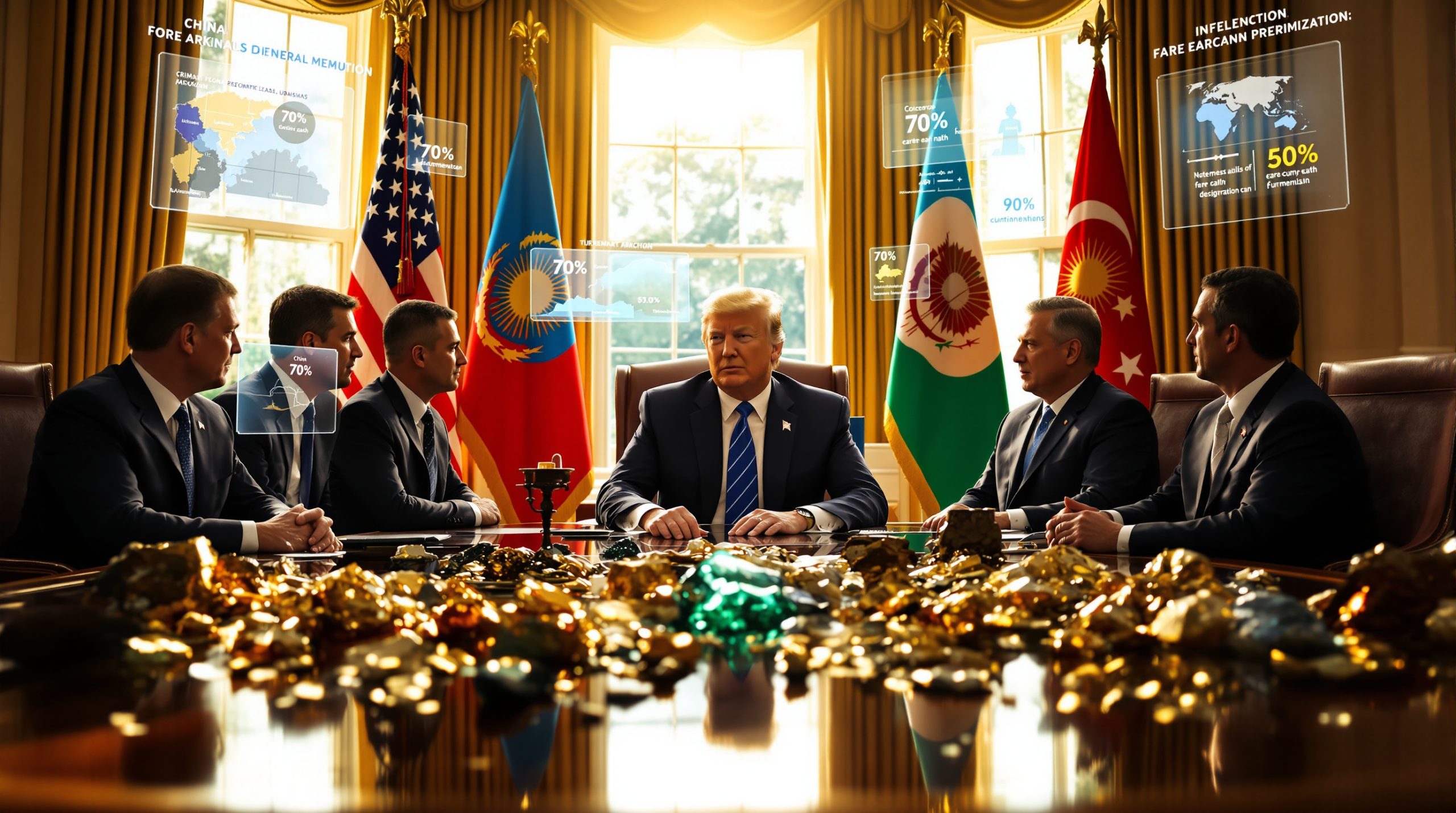Understanding the EU-Serbia Lithium Agreement Framework
The EU-Serbia lithium agreement represents a fundamental shift in Europe's approach to critical mineral security, establishing comprehensive frameworks that extend far beyond traditional extraction partnerships. This strategic alliance operates through five interconnected pillars designed to create an integrated battery materials ecosystem spanning raw material extraction, processing, manufacturing, and workforce development.
The partnership emerged under the Critical Raw Materials Act (CRMA), which entered into force on June 14, 2024, providing the legal foundation for Europe's diversified mineral sourcing strategy. Furthermore, this initiative aligns closely with broader critical minerals energy transition strategies across the continent. The CRMA establishes a tiered approach where strategic projects receive coordinated EU institutional support, member state backing, and enhanced financing access through mechanisms including European Investment Bank loans and Innovation Fund resources.
Strategic Implementation Architecture
The agreement's operational structure integrates multiple governance layers to ensure comprehensive supply chain security. Strategic projects designated under the CRMA receive priority treatment through coordinated Commission resources, while supply chain partnerships create integrated frameworks connecting extraction to European manufacturing capabilities.
Key implementation mechanisms include:
• Value chain development for raw materials and electric vehicle integration
• Research collaboration initiatives linking Serbian geological expertise with European battery technology
• Environmental and social governance standards embedded throughout operations
• Financial instrument mobilization through EU funding programs
• Workforce development programs targeting high-quality employment opportunities
In June 2025, the European Commission officially designated Serbia's Jadar project among 13 strategic critical materials initiatives in third countries, positioning it as a cornerstone of Europe's mineral security architecture.
Serbia's Jadar Project: Technical Specifications and Market Impact
The Jadar Valley development serves as the primary driver of the EU-Serbia lithium agreement, containing an estimated 200 million tonnes of lithium-borate ore with approximately 2.4 million tonnes of lithium carbonate equivalent (LCE). This deposit's significance stems not from absolute size but from its strategic geographic proximity to European markets and processing infrastructure.
Project Specifications and Production Capacity
| Metric | Value |
|---|---|
| Estimated Reserves | 200 million tonnes lithium-borate ore |
| Lithium Carbonate Equivalent | 2.4 million tonnes LCE |
| Potential EU Market Share | 10-15% of lithium demand |
| Annual Production Capacity | 50,000-75,000 tonnes LCE |
| EV Production Support | 1.1 million vehicles annually |
| Projected Revenue (10 years) | €4 billion |
| Serbian Treasury Revenue | €300 million |
The project's 10-15% of European lithium demand translates to approximately 50,000-75,000 tonnes of lithium carbonate equivalent annually, based on current EU consumption patterns of 500,000-750,000 tonnes LCE per year. This production capacity theoretically supports 1.1 million electric vehicles annually, assuming approximately 75 kg of lithium carbonate equivalent per EV battery pack.
Technical Processing Requirements
Jadar's lithium-borate ore composition requires specialized processing methodology distinct from conventional hard-rock lithium extraction or geothermal lithium extraction techniques. The ore processing involves:
• Acid leaching of boron-containing lithium silicate formations
• Lithium hydroxide precipitation following solvent extraction
• Water consumption of approximately 500-800 gallons per tonne of lithium carbonate equivalent
• Processing timeline targeting 2030-2032 commercial production commencement
Unlike lithium resources in South America's Lithium Triangle or Australian lithium innovations, Jadar offers substantially reduced transportation costs and supply chain complexity, potentially reducing final battery manufacturing costs by 8-12% compared to non-European sourcing.
Economic Impact Analysis and Benefit Distribution
Serbian officials project the EU-Serbia lithium agreement will generate approximately 20,000 new employment opportunities across the lithium value chain, encompassing direct mining operations, processing facilities, manufacturing, and supply chain support services.
Employment Distribution Analysis
The 20,000 employment figure breaks down across multiple economic sectors:
• Direct Employment: 2,000-4,000 jobs in mining and processing operations
• Indirect Employment: 6,000-8,000 jobs in supply chain support, equipment provision, and logistics
• Induced Employment: 8,000-10,000 jobs from secondary economic activity generated by wage spending
This employment multiplier effect assumes approximately 3-5 secondary jobs created per direct mining position, consistent with International Monetary Fund estimates for extractive industries in Central and Eastern European economies.
Revenue Distribution Concerns
Financial analysis reveals significant disparities in benefit distribution, with €4 billion in projected 10-year revenues generating only €300 million (7.5%) flowing to Serbian Treasury. This benefit-sharing ratio reflects patterns observed in other developing-economy mineral extraction projects, where operator profits typically represent 70-85% of total value.
The 92.5% value capture by international operators versus 7.5% to local government suggests limited Serbian negotiating leverage, particularly considering global capital requirements for large-scale lithium processing infrastructure.
Downstream Manufacturing Integration
Beyond extraction, the agreement encompasses downstream processing through partnerships including InoBat AG's battery manufacturing facility. The Slovak company committed to factory construction beginning in 2025, supported by €419 million in Serbian government subsidies.
However, battery manufacturing value chain analysis reveals:
• Raw materials: 15-20% of final cell value
• Cell production labour: 10-15% of value
• Technology licensing and IP: 40-50% of value
• Capital equipment: 15-20% of value
This distribution indicates that 80-90% of battery cell manufacturing value typically accrues to technology licensing and intellectual property holders rather than host countries.
Environmental Opposition and Water Resource Concerns
Environmental groups cite multiple technical risks associated with the EU-Serbia lithium agreement's implementation, focusing particularly on water resource protection and community displacement concerns.
Water Contamination Risk Assessment
The Jadar River valley system serves approximately 100,000-150,000 people in surrounding agricultural regions dependent on river water for irrigation and domestic consumption. Environmental opposition focuses on three specific technical risks:
1. Acid Mine Drainage (AMD)
Boron-rich lithium ore oxidation produces sulfuric acid capable of dissolving heavy metals (aluminium, iron, manganese) into groundwater systems. Without perpetual active management, AMD contamination can persist 50-100+ years post-mining operations.
2. Saline Discharge Impact
Lithium extraction produces high-salinity wastewater that, if released into freshwater aquifers, renders water unusable for agriculture due to osmotic stress effects on crop production systems.
3. Cumulative Contamination Loading
Industrial operations within 50 kilometres, including phosphate fertiliser plants and copper smelters, create compound contamination risks if lithium mining adds pollution loading to existing stressed water systems.
Aquifer Vulnerability Analysis
The Jadar Valley aquifer sits approximately 50-200 metres below surface in regions of moderate geological containment, presenting theoretical contamination risks if spillage or seepage occurs during processing operations.
Lithium processing water requirements of 500-800 gallons per tonne of lithium carbonate equivalent produced raises sustainability concerns given regional water availability constraints. Consequently, proper mine reclamation innovation becomes essential for long-term environmental protection.
Permitting Process Transparency Issues
In 2021, the Serbian government revoked Rio Tinto's permits following mass protests, indicating both public opposition success and government responsiveness to pressure. This permit revocation delayed project commencement by approximately 3-4 years (2021-2024/2025 recovery phase).
Recent political developments have revived project prospects, though environmental groups continue challenging transparency in:
• Environmental baseline data availability and accessibility
• Independent verification processes separate from operator assessments
• Community consent mechanisms enabling meaningful local participation
• Adaptive management requirements with permit suspension triggers
Europe's Supply Chain Diversification Strategy
The EU-Serbia lithium agreement operates within Europe's broader strategy to reduce dependence on Chinese-controlled mineral processing and supply chains. China currently controls approximately 60-70% of global lithium processing capacity despite controlling only 15-20% of primary lithium reserves.
Strategic Diversification Mechanisms
Since 2021, the European Union has established critical materials partnerships with 14 countries, creating a diversified network including Argentina (lithium), Norway (rare earths), and Zambia (copper and cobalt). This multi-country approach operates through dual mechanisms:
1. Supply Source Diversification
Reducing reliance on single-source lithium suppliers, particularly Chile's dominance of 28-32% of global production and Australia's 50-55% of hard-rock production output.
2. Processing Repatriation
Building European battery manufacturing and lithium processing capacity to reduce Chinese value-capture dominance, as approximately 85% of lithium battery cell production currently occurs in China or China-adjacent Asian facilities.
Climate Neutrality Timeline Alignment
The partnership directly supports the EU's 2050 climate neutrality objectives established under European Climate Law (EU Regulation 2021/1119). Interim targets include:
• 2030: 55% greenhouse gas emission reduction compared to 1990 levels
• 2035: Phase-out of internal combustion engine vehicle sales
• 2040: 90% emission reduction milestone
The EU-Serbia lithium agreement provides essential materials for renewable energy infrastructure and electric vehicle production necessary to achieve these legally binding targets.
Governance Challenges and Democratic Oversight
The EU-Serbia lithium agreement faces significant governance challenges related to democratic oversight, transparency, and accountability mechanisms within Serbia's current political framework.
Democratic Institution Concerns
Critics argue that Serbia's governance framework lacks sufficient transparency and accountability mechanisms for responsible resource management. Concerns about rule of law, media freedom, and democratic institutions raise questions about effective oversight implementation throughout the project lifecycle.
Parliamentary Opposition Response
Serbian opposition parties have consistently challenged lithium mining through legislative channels. In September 2024, parliament rejected an opposition bill proposing a complete ban on lithium mining activities, highlighting ongoing domestic political divisions regarding the project's implementation.
The parliamentary opposition argues that the EU-Serbia lithium agreement proceeds without adequate public consultation and democratic approval processes, potentially circumventing constitutional requirements for major resource development decisions.
Institutional Capacity Questions
Effective environmental monitoring and enforcement require institutional capacity that may exceed current Serbian regulatory capabilities. Key concerns include:
• Technical expertise for ongoing environmental monitoring
• Financial resources for independent oversight operations
• Legal frameworks enabling permit suspension or modification
• International arbitration mechanisms for dispute resolution
Automotive Industry Strategic Partnerships
Major international automakers view the EU-Serbia lithium agreement as a strategic opportunity to establish integrated supply chains from extraction through vehicle production, reducing dependence on Asian supply chains.
Direct Supply Chain Integration
Mercedes-Benz and Stellantis have expressed interest in establishing direct supply agreements with Serbian lithium operations, creating vertically integrated supply chains that could provide competitive advantages in electric vehicle manufacturing costs and supply chain resilience.
These partnerships potentially enable:
• Cost reduction of 8-12% compared to non-European sourcing
• Supply security independent of geopolitical disruptions in maritime chokepoints
• Quality control through integrated processing and manufacturing systems
• Carbon footprint reduction via shortened transportation distances
Battery Technology Development
The agreement facilitates collaboration between European battery technology developers and Serbian mineral resources, potentially creating competitive advantages in next-generation battery chemistry research and development.
European automakers are particularly interested in lithium iron phosphate (LFP) battery technologies that could utilise Jadar's specific ore composition for cost-effective energy storage solutions in mass-market electric vehicles. In addition, this collaboration aligns with broader trends in mining industry evolution towards more sustainable practices.
Balkan Geopolitical Implications
The EU-Serbia lithium agreement carries significant implications for regional power dynamics and Serbia's complex geopolitical positioning between European integration and traditional alliances with Russia and China.
EU Accession Process Considerations
The partnership raises critical questions about how resource extraction agreements interact with Serbia's EU accession negotiations. Traditional accession processes emphasise governance reform requirements, rule of law strengthening, and democratic institution building.
Some analysts worry that economic partnerships might overshadow these governance reform requirements, potentially allowing Serbia to access EU economic benefits without implementing comprehensive democratic reforms expected of membership candidates. However, critics argue this approach undermines democratic values within EU expansion strategies.
Regional Influence Dynamics
This agreement positions Serbia as a strategically important partner in Europe's green transition, potentially affecting regional relationships and Serbia's diplomatic balancing act between major powers.
The EU-Serbia lithium agreement may influence:
• Regional competition with other Balkan states seeking EU investment
• Russian influence in Serbian domestic politics and energy policy
• Chinese Belt and Road Initiative projects in the Western Balkans
• NATO relations and regional security cooperation frameworks
Long-term Strategic Positioning
Serbia's role as a critical minerals supplier could provide enhanced negotiating leverage in future EU accession discussions, while potentially creating economic dependencies that limit policy autonomy in other areas.
The agreement establishes Serbia as a strategic energy transition partner rather than merely an accession candidate, potentially altering traditional EU expansion dynamics in the Western Balkans region.
Investment and Market Psychology Considerations
The EU-Serbia lithium agreement reflects broader shifts in critical minerals investment psychology, driven by supply chain security concerns rather than purely economic optimisation considerations.
Risk Premium Calculations
European willingness to accept higher extraction costs in Serbia compared to established suppliers reflects geopolitical risk premiums increasingly incorporated into strategic planning. The agreement prioritises supply security over short-term cost minimisation, indicating fundamental shifts in resource investment criteria.
Market Timing and Cyclical Factors
Lithium market dynamics suggest the agreement's timing may coincide with supply shortage periods projected for 2026-2030, when global electric vehicle adoption could outpace production capacity increases from traditional sources.
This timing positions the EU-Serbia lithium agreement to capture premium pricing during anticipated supply constraints, potentially improving project economics beyond baseline financial projections.
Disclaimer: This analysis contains forward-looking statements and projections that involve risks and uncertainties. Actual results may differ materially from those projected. Investment decisions should not be based solely on this information, and readers should conduct independent research and consult with qualified advisors before making financial commitments related to lithium markets or European critical minerals investments.
Could the EU-Serbia Lithium Agreement Signal Your Next Investment Opportunity?
The EU's strategic partnership with Serbia represents a fundamental shift towards localised critical minerals sourcing, potentially creating significant opportunities for investors monitoring European lithium developments. Discovery Alert's proprietary Discovery IQ model delivers instant notifications when ASX-listed companies announce major lithium and critical minerals discoveries, helping investors identify actionable opportunities in this rapidly evolving market ahead of broader recognition.




